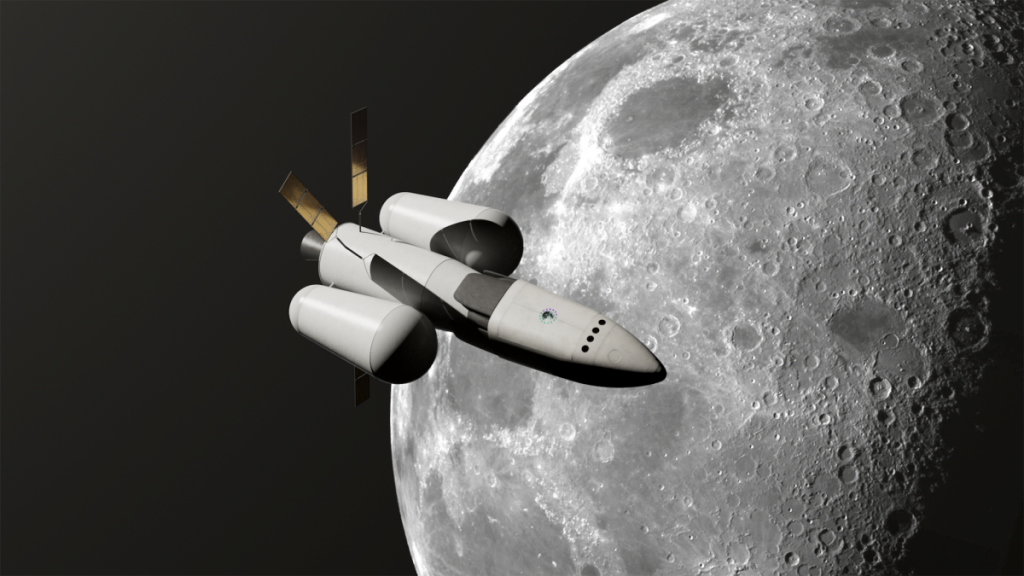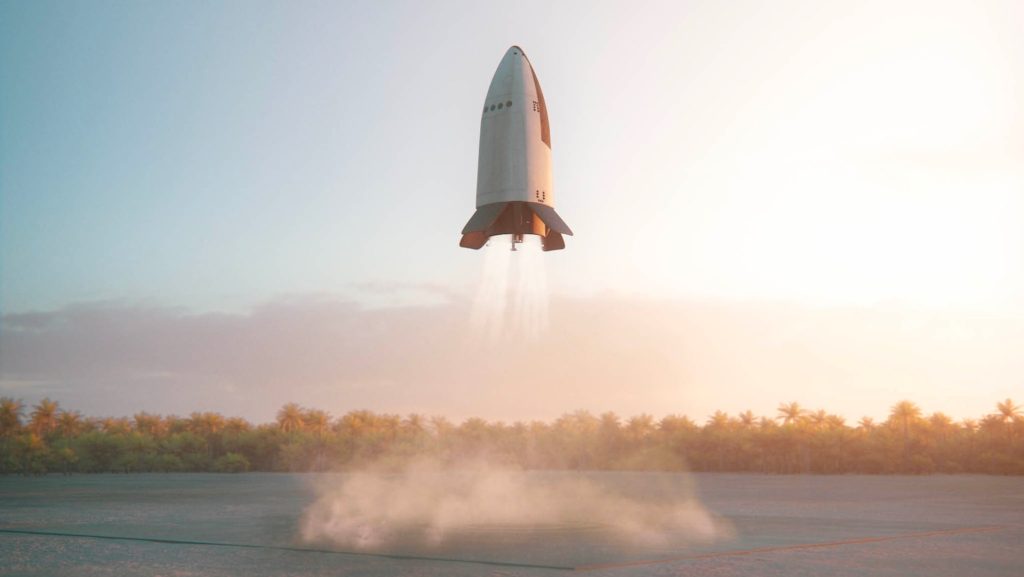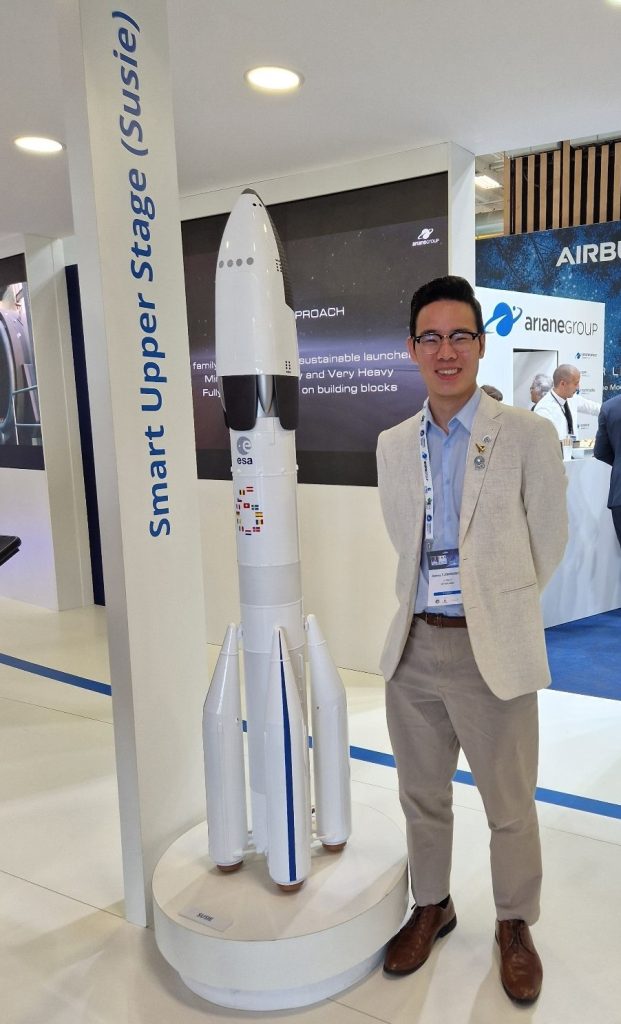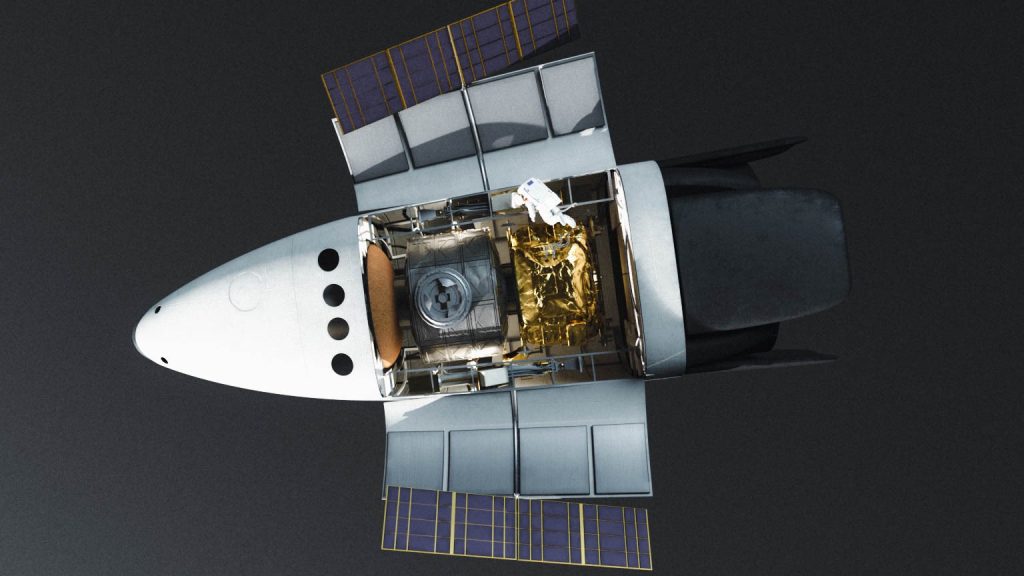ArianeGroup’s ambitious new spacecraft proposal reawakens Europe’s vision of independent human spaceflight.
Author: Danny Tjokrosetio, Leonardo Times Editor
The year is 2031. Looming above the palm trees of Kourou, a gleaming Ariane 6 stands poised and ready for liftoff. The scene is familiar to the Guiana Space Center, save for an unusual vehicle mounted on top of the rocket. A new dawn in space exploration is about to begin.
It is clear that the world is seeing a revolution in innovation like never before – rapid technological changes are also reiterated in the activities of spacefaring nations. Europe’s response to adapt to these changes in the space sector is the proposal of a new kind of spacecraft whose essence lies in reusability and versatility. On September 18, 2022, French aerospace giant ArianeGroup revealed this spacecraft to the world at the 73rd International Astronautical Congress in Paris. The spacecraft was lovingly christened Susie, an acronym for Smart Upper Stage for Innovative Exploration.
“It is our industrial duty to contribute to this ambition (of European space exploration and crewed flight) and offer European decision-makers smart and ambitious technological solutions capable of contributing to independent access to space. And also to open the door to European space exploration and address commercial and institutional needs for services in space over the coming decades,” said Morena Bernardini, ArianeGroup’s Head of Strategy and Innovation [1].
Designed as an integrated space vehicle, Susie is a reusable upper stage that replaces a launch vehicle fairing. It can be converted into a cargo freighter for payloads up to 7000 kg or a crew vehicle carrying up to five astronauts for missions to and beyond Earth orbit [1]. Susie is 12-meters long and 5.4-meters in diameter and designed to fit on an Ariane 64 launch vehicle, the heavier Ariane 6 variant. Furthermore, Susie will fit on future launch vehicles, both expendable and reusable, without making significant changes.
In addition, Susie is scalable to fit a variety of missions. Susie’s scalability comes in geometrical flexibility, where the ratio between length and diameter can be modified. Its 40 m³ payload bay is replaceable by propellant tanks and engines to convert it into a complete upper stage. Functional scalability is another aspect. On longer duration crewed missions, such as beyond Earth orbit, the payload bay can convert into extra habitable volume for the crew to live comfortably. To make this possible, Susie will be docked to a space transfer module that provides additional power, propulsion, water, and electricity to the spacecraft.

Bernardini explained that Susie was based on the knowledge gained from previous projects at ArianeGroup and the European space industry [1]. Marco Prampolini, ArianeGroup’s System Architect for Advanced Concepts, took Susie’s advanced control system for example: “I would like to stress that the re-entry technologies we adopt here on this vehicle are not black magic. It’s all technology that is coming from available knowledge,”
The re-entry technologies were gained from re-entry research vehicles such as the IXV [2]. Susie is a lifting body, which allows for a comfortable and controllable re-entry of about two to three Gs. Unlike other lifting bodies, Susie can re-enter on higher energies and velocities, such as a return trip from the Moon. Following re-entry, Susie would land vertically on four landing legs using a propulsion system with non-toxic propellant, comparable to the initial concept of SpaceX’s Crew Dragon. An integrated abort system will also be built into Susie, meaning that aborts can be executed at any phase of flight, even during landing.

ArianeGroup developed Susie under ESA’s NESTS (New European Space Transportation Solutions) Initiative, collaborating with companies across Europe such as Airbus, Thales Alenia Space, and D-Orbit to benefit from a varying set of skills. The project is currently in its conceptual phase and has been in the developing stage for three years [2]. Throughout these years, ArianeGroup has analyzed the future needs of space transportation in-depth and designed Susie to fit three possible future scenarios.
The first scenario is based on resilience.
“It’s a scenario where Europe continues to transition towards a green economy, benefitting from sustainable space technologies. It is where markets are widely available. And throughout the market, Europe will take its share,” said Joost van Tooren, Human Spaceflight Program Manager at ArianeGroup [2].
Van Tooren noted that as the strategic use of space increases, strategic autonomy is extended in reaching space, activities in space, and returning from space. As a result, Europe will be able to make international partnerships for deep space missions, such as lunar and Martian missions.
The second scenario takes a darker turn – a future where Europe takes a standalone position in the midst of geopolitical tensions and climate change insecurities and focuses on defense and autonomy. In such a future, exploration missions will be significantly reduced, resulting from a lack of international cooperation.
The third scenario is where the world recognizes the opportunities and applications of in-space manufacturing and assembly, thriving the in-space economy. Space stations, space observatories, large satellites, and other infrastructures would be constructed. These space infrastructures must be launched, deployed, maintained, have a sound end-of-life strategy, and even be human-operated. The In-Space revolution would also allow easier exploration of deep space.
Susie would be able to serve all activities described in the three scenarios for various missions and destinations. According to van Tooren, all scenarios comprise the same demands with different priorities [2]. ArianeGroup believes in a future that harbors a space logistical network; this means flying to a space hub before arriving at a final point instead of traveling from point to point. Susie would be able to cater for numerous activities in this network. This includes not only the in-space construction of large infrastructures and cargo transport, but also refueling and tugging. With a recoverable payload capacity of seven tons, Susie can aid in the removal of orbital debris and de-orbit spacecraft at the end of their lives [1].
CONCLUSION
The decision to enable independent European crewed spaceflight may sound like news. This, however, is not the first time Europe worked towards such a program. In 1975, CNES, the French national space agency, proposed the Hermes space plane, capable of carrying a crew of four to six astronauts and a payload of 4500 kg. The project was ESA-approved in 1987. As no existing European launch vehicle could launch Hermes at the time, the spaceplane was the primary reason for the development of Ariane 5, making it human-rated [3]. Hermes was ultimately canceled in 1992 due to an inability to achieve cost and performance goals, plus significant schedule slips.
A project in its conceptual phase as new and ambitious as Susie might be prone to suffer the same fate as Hermes, but only time will tell. Susie, however, indicates Europe’s shift towards reusable space technology and paves the way for fully reusable space transportation systems in Europe.

REFERENCES
[1]: ArianeGroup Press. (2022, September 23). ArianeGroup Unveils Susie at IAC. ArianeGroup. Retrieved September 26, 2022, from https://press.ariane.group/arianegroup-devoile-susie-a-liac-4735/?lang=eng
[2]: International Astronautical Federation. (2022, September 21). GNF – MEET SUSIE – Sunday 18 September [Video]. YouTube. Retrieved September 26, 2022, from https://www.youtube.com/watch?v=B1viQWRn2dg

